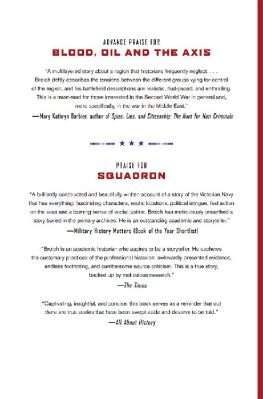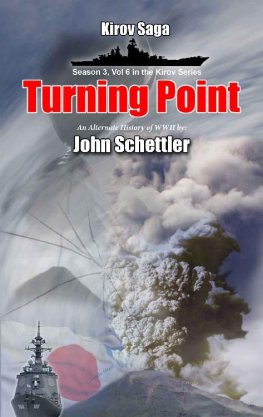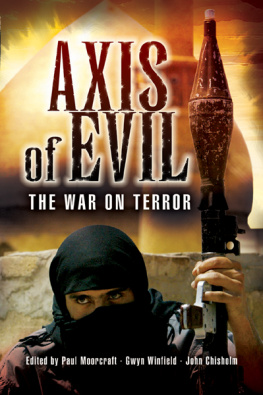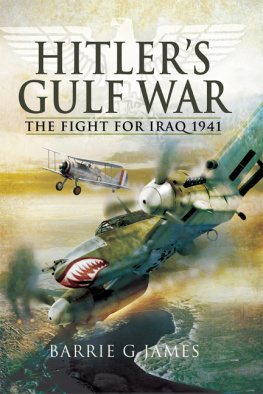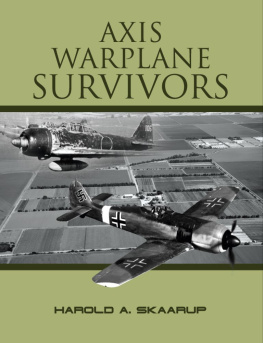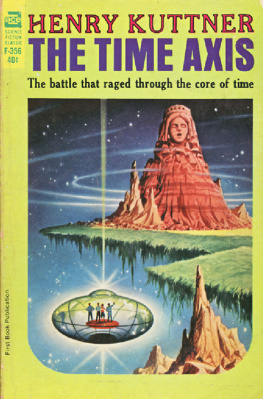John Broich - Blood, Oil and the Axis: The Allied Resistance Against a Fascist State in Iraq and the Levant, 1941
Here you can read online John Broich - Blood, Oil and the Axis: The Allied Resistance Against a Fascist State in Iraq and the Levant, 1941 full text of the book (entire story) in english for free. Download pdf and epub, get meaning, cover and reviews about this ebook. year: 2019, publisher: Harry N. Abrams, genre: Politics. Description of the work, (preface) as well as reviews are available. Best literature library LitArk.com created for fans of good reading and offers a wide selection of genres:
Romance novel
Science fiction
Adventure
Detective
Science
History
Home and family
Prose
Art
Politics
Computer
Non-fiction
Religion
Business
Children
Humor
Choose a favorite category and find really read worthwhile books. Enjoy immersion in the world of imagination, feel the emotions of the characters or learn something new for yourself, make an fascinating discovery.
- Book:Blood, Oil and the Axis: The Allied Resistance Against a Fascist State in Iraq and the Levant, 1941
- Author:
- Publisher:Harry N. Abrams
- Genre:
- Year:2019
- Rating:4 / 5
- Favourites:Add to favourites
- Your mark:
Blood, Oil and the Axis: The Allied Resistance Against a Fascist State in Iraq and the Levant, 1941: summary, description and annotation
We offer to read an annotation, description, summary or preface (depends on what the author of the book "Blood, Oil and the Axis: The Allied Resistance Against a Fascist State in Iraq and the Levant, 1941" wrote himself). If you haven't found the necessary information about the book — write in the comments, we will try to find it.
The riveting story of the unlikely coalition of individuals who prevented the Axis from obtaining an abundant supply of oil and absorbing an army of 50,000 into their own, turning the tide of WWII in the Middle East
Spring 1941 was a high point for the Axis war machine. Western Europe was conquered; southeastern Europe was falling, Great Britain on its heels; and Rommels Afrika Korps was freshly arrived to drive on the all-important Suez Canal.
In Blood, Oil and the Axis, historian John Broich tells the story of Iraq and the Levant during this most pivotal time of the war. The browbeaten Allied forces had one last remaining hope for turning the war in their favor: the Axis running through its fuel supply. But when the Golden Squarefour Iraqi generals allegiant to the Axis causestaged a coup in Iraq, elevating a pro-German junta and prompting military cooperation between Vichy Frenchoccupied Syria and Lebanon and the Axis, disaster loomed.
Blood, Oil and the Axis follows those who participated in the Allies frantic, improvised, and unlikely response to this dire threat: Palestinian and Jordanian Arabs, Australians, American and British soldiers, Free French Foreign Legionnaires, and Jewish Palestinians, all who shared a desperate, bloody purpose in quashing the formation of an Axis state in the Middle East. Memorable figures of this makeshift alliance include Jack Hasey, a young American who ran off to fight with the Free French Foreign Legion before his own country entered the war; Freya Stark, a famous travel-writer-turned-government-agent; and even Roald Dahl, a twenty-three-year-old Royal Air Force recruit (and future author of beloved childrens books).
Taking the reader on a tour of cities and landscapes grimly familiar to todays readerfrom a bombed-out Fallujah, to Baghdad, to DamascusBlood, Oil and the Axis is poised to become the definitive chronicle of the Axiss menacing play for Iraq and the Levant in 1941 and the extraordinary alliance that confronted it.
16 b&w illustrationsJohn Broich: author's other books
Who wrote Blood, Oil and the Axis: The Allied Resistance Against a Fascist State in Iraq and the Levant, 1941? Find out the surname, the name of the author of the book and a list of all author's works by series.

